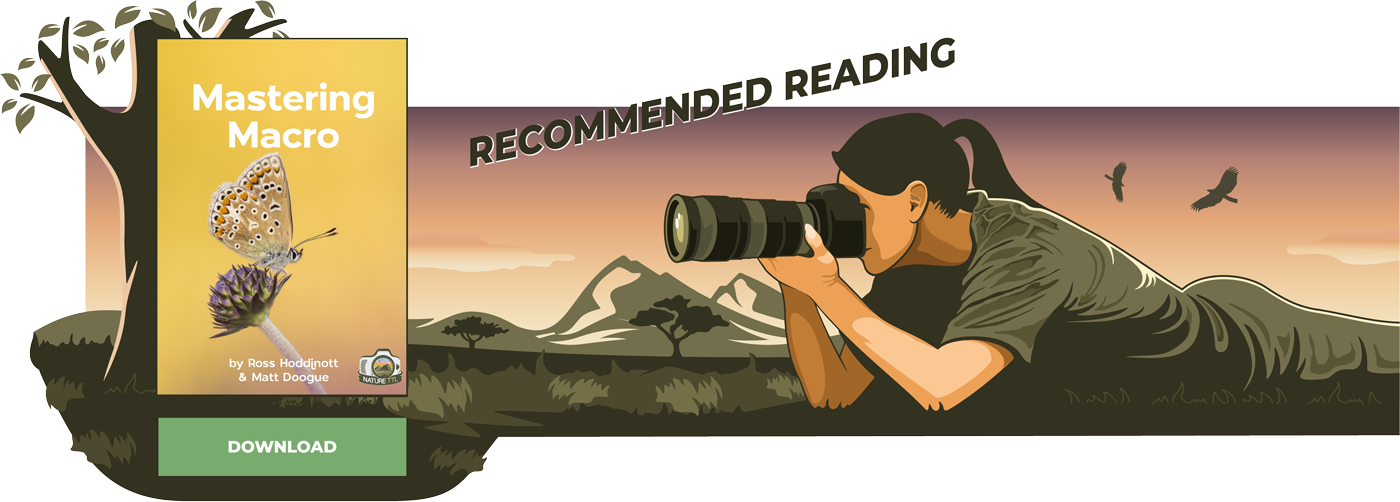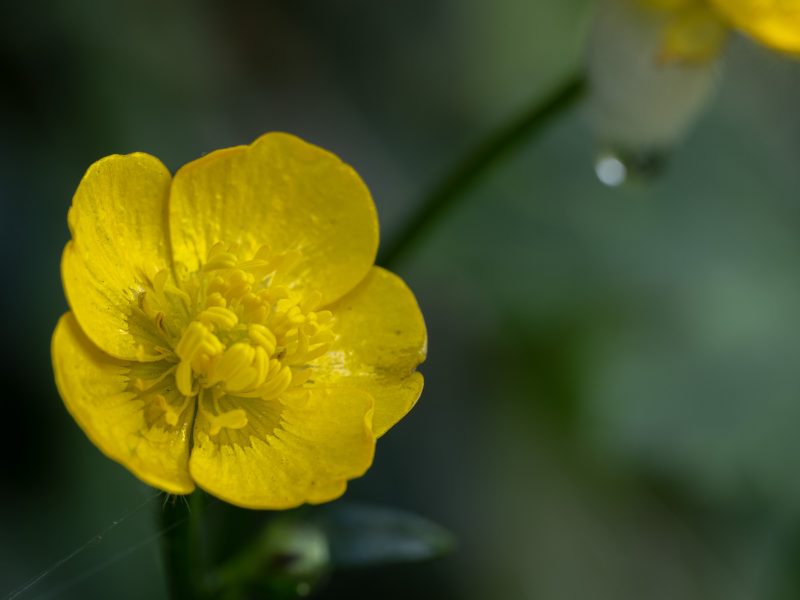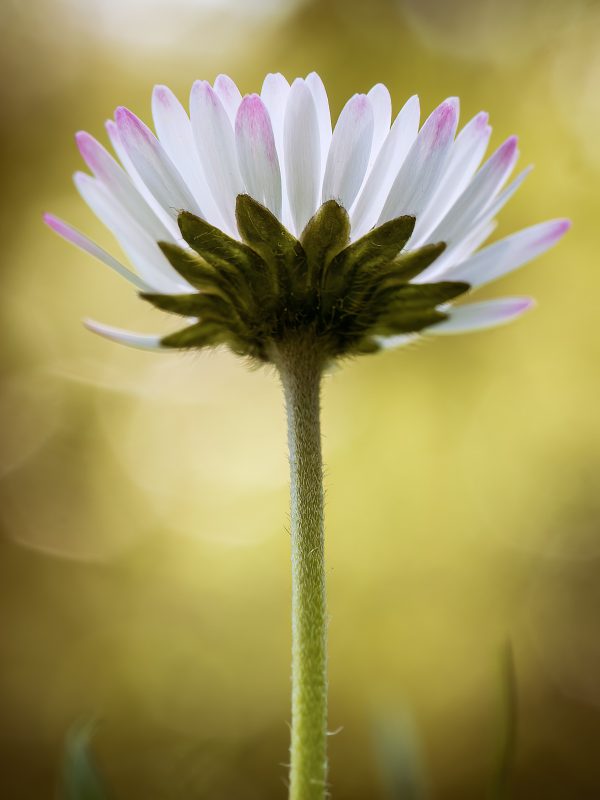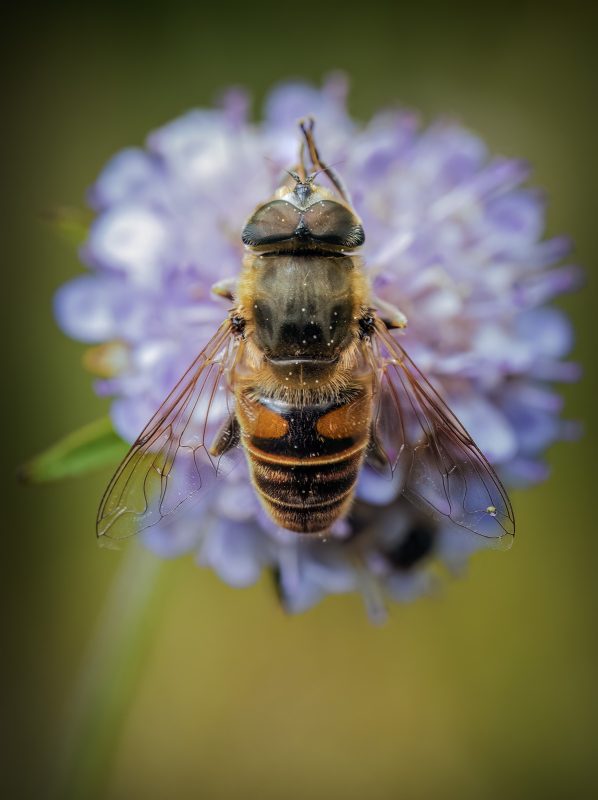9 Tips for Macro Flower Photography

Whether you’re just getting started in the wonderful world of macro photography or are a seasoned pro, here are 9 tips to improve your macro flower photography.
As an outdoor macro photography enthusiast, it’s often easy to jump to the more ‘exciting’ subjects; I’m thinking of the marvellous world of insects and minibeasts!



But there’s a subject on our doorstep that can make for truly fantastic photographs and shouldn’t be overlooked just because it’s common.
Flowers provide an endless range of subjects that allow us to explore various techniques and develop our photography skills while capturing beautiful images at the same time!
They are a particularly useful subject if you are new to macro photography because they don’t move around much – and they can be found pretty much everywhere!
1. Macro photography equipment
Equipment isn’t everything, but having the right equipment for any form of specialized photography is important if you want to get the best out of your images. If you want to get great macro flower images, I highly recommend using a dedicated macro lens.

Macro lenses are your best option for any photography of small subjects because of the flexibility they offer. They allow you to capture tiny details or move further away and include the entire plant if you decide you want to show your subjects in situ.
Choosing the correct focal length is important, hence why I use 3 different macro lenses! The focal length creates distance between the camera and the subject.
The following images were captured from a fixed position, on a tripod, and demonstrate the field of view achieved with a 30mm, 60mm, and 90mm macro lens on a micro four-thirds sensor.



Long focal lengths exceeding 100mm are generally required for insect photography, owing to their skittish nature. However, this isn’t the case with flower photography, as we are able to physically get closer to our subject.
Some photographers may prefer the compression offered by longer lenses because shorter focal lengths produce less background blur.


Note that when the images are similarly composed, the depth of field produced with the 90mm macro is shallower than that of the 60mm when photographed with the same aperture value.
Working up close reduces our depth of field, and therefore capturing critical sharpness when using autofocus with a macro lens can be challenging for our camera systems, which rely on contrast to locate sharp areas.
Fortunately, most macro lenses have manual focus control that enables us to take control of our focusing to increase our chances of a beautifully sharp image, but make sure that this option is available.
There are fully manual focus lenses on the market – do not be put off by the lack of autofocus, as these are cost-effective lenses and autofocus is not vital to macro photography.
Read more: What’s the Best Macro Photography Lens?
2. Get stable
Stability is key in all macro photography because micro-movements are greatly exaggerated, and maintaining critical focus can be a bit tricky. Flowers may not be able to flee in the way an insect can, but they do move…a lot!
Wind is perhaps the greatest challenge when photographing flowers, as their small stems and sail-like petals catch even the smallest of breezes.

Flowers have rather peculiar shapes and come in a variety of sizes, with protruding pollen stems and areas that drift in and out of focus.
Therefore, achieving a broad depth of field, with enough coverage over the entire flower, requires either a small aperture (such as f/8-11) or focus stacking. Both of these techniques require our subjects to be perfectly still for a few moments.
Alternatively, why not get creative? Try using a shallow depth of field to showcase specific areas of your subject and allow the backgrounds to beautifully fall out of focus.
Some cameras (such as my OM-1) have built-in stabilizers that make it possible to handhold. However, a decent tripod is always useful, particularly for those who don’t have this option or prefer to work at a slower pace.
I chose the Jay tripod from Three Legged Thing. The system is customizable and can be adjusted for most shooting conditions. I can remove all the legs and replace them with short, metal feet for ground-level shooting at very high magnifications.

Look for a tripod that will enable you to shoot at ground level with adjustable legs to avoid them pushing your subject away during setup. This issue is less evident when using a longer focal length macro lens.
Some tripods have the option of tilting the centre column at a right angle and extending beyond the legs, which helps get the camera closer, but it may become unstable.
Choose a good quality, sturdy tripod—they come with a price tag, but they are supporting valuable equipment. Photography retailers are very helpful, and most will let you try a tripod in-store, so you can be certain that the tripod will suit your needs.
Personally, I enjoy the flexibility of a ball head and an L bracket. This combination makes composing images and changing from portrait to landscape orientation much simpler.
Read more: How to Use Foregrounds & Backgrounds in Macro Photography
3. Consider different angles
Composition is a key element that enables us to put our vision into our images. How each of us sees the world is what makes our images unique. Therefore, it’s important to explore new angles to achieve images that are truly our own.
Plants aren’t known for their ability to flee from photographers (lucky for us), which means we can spend extra time with this subject to explore different viewpoints and perspectives.

Look for new compositions in your macro flower photography. Don’t get stuck in a familiar or common setup, and remember that in this day and age of digital photography, there’s no harm in experimenting with lots of images!
Lying on the ground can transform our compositions, pointing upwards offers a different perspective (provided we can get back up!). Use dramatic angles to create dynamic compositions. Don’t be afraid to make mistakes on the journey to capturing something unique.
Read more: How to Compose a Macro Photo
4. Look for details – get in close
Utilizing higher magnifications can reveal fascinating details.
Taking a closer look at the stigma of a flower can create a beautiful image that allows viewers to study tiny details in the shapes and pollen that are not easily appreciated with the naked eye.

When attempting this kind of macro flower photography, you need to be aware that your depth of field will be significantly reduced as you increase the magnification and get closer to your subjects.
Therefore, smaller apertures are going to be needed to ensure that your subjects are in focus. This can be challenging because we need extra light or longer exposures.
The use of a tripod can help in these situations, provided that the conditions allow for longer exposure times.
5. Water droplets
Head out early in the morning when the dew is still on the grass, or just after it’s rained, to create this magical macro flower photography effect. Or bring your own spray bottle and create water droplets yourself!

Water droplets can create refractions and offer a creative way to photograph our usual subjects.
Note that overcast weather conditions are often better for this, as they create diffused natural light that makes it easier to control highlights.
On sunny days, look for areas of shade to help soften the bright areas on reflective petals and diffuse the background.
Learning by doing is perhaps the best approach with images like this. Take your time and move around the subject, exploring various shooting positions until you see the image appear in your viewfinder.

Composing so that the flower is behind the water drop creates a mini flower within a water world. It’s a very exciting technique that is limited only by our imaginations.
Selecting a longer macro lens will reduce the chances of our camera equipment being reflected in the water droplets, as will carefully composing the image to avoid unwanted reflections.
6. Water reflections
Creating new and interesting images is a difficult thing to do in today’s world, but the only way to continue to improve your macro flower photography is to find new ways to create beautiful and interesting images.

Ponds, rivers, and streams are beautiful locations to explore and offer photographers a variety of creative opportunities, such as specular highlights, motion blur, and reflections. Search along the edges of ponds for wildflowers and plants such as iris that grow near the water.
Reflection images of flowers can be particularly beautiful. Look for an isolated subject against a simple background for an elegant composition.
Placing the camera at water level and parallel to the flower will soften the background and bring the reflection into view. A wide aperture such as f/2.8 can create a shallow depth of field to draw our attention to the flower.
7. Use the light
Experimenting with different exposure techniques is another great way to improve our macro flower photography.
Bright sunny days aren’t always ideal as they create harsh shadows and high-contrast scenes. But did you know that bright light can create fantastic specular highlights in the backgrounds of your macro images?

Perfect conditions aren’t always available to us, but with a little creativity, we can use any light to our advantage.
Read more: How to Balance Flash with Ambient Light in Macro Photography
8. Flowers as habitat
Flowers are vital to wildlife and insect life, and incorporating these elements into your macro flower photography is a great way to improve your images and offers a much wider range of subjects.
It is great fun to capture images of bugs on flowers, but it can be rather tricky to achieve a decent composition! I believe it’s best practice to photograph insects in situ—never move them for the sake of an image.

Simply train your eye to find good photography opportunities. Early spring flowers are the first food source for many insects that are just coming out of hibernation.
Move slowly, pay attention to each flower, and you may be lucky enough to find something unexpected.
When composing with insects and spiders, aim to ensure their eyes are in focus and use the flower to create a scene.

Get parallel to your subject and shoot from their eye level. This can create engagement with the viewer. Pay close attention to backgrounds and avoid distractions such as grass and twigs to simplify the scene.
If you’ve practised with flowers alone first, then you will have developed an idea as to how best you can frame the scene.
Read more: The Best Habitats for Macro and Insect Photography
9. Focus stacking
Occasionally, it could be useful to use focus stacking techniques. Working very close to subjects limits how much of our image is in focus. Diffraction caused by small apertures such as f16 and F22 can reduce image quality.
Each of us will have various tolerance levels for diffraction, so experiment to find your comfort zone.
Additionally, small apertures require longer exposure times, which aren’t always achievable when working outdoors.
Backgrounds also become more defined and in focus as we increase our F numbers. Aesthetically, it may not be as pleasing compared to a shallow depth of field.

Focus stacking allows us to overcome the physical limitations of F numbers and capture what we see, provided it all works out!
Focus stacking also allows us to use a wider aperture and a lower ISO to gain depth of field over our subject by shooting multiple images. Using this approach requires minimal camera and subject movement.
Ideally, the camera and subject will remain still for the entire focus-stacking sequence. When setting up for a focus stack, use manual mode to ensure that your exposure will remain consistent.
Read more: How to Focus Stack Macro Photos in the Field
In conclusion
It is a wonderful time of year to get out and practice your macro flower skills. Remember that there are always new and creative ways to capture images of familiar subjects and that we can always improve, no matter what level we’re at!
Pack some lunch, take a flask of your favourite beverage, and enjoy your trip into the magical world of macro photography!





